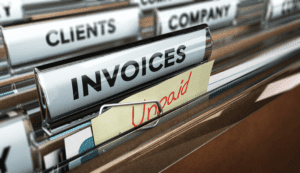Accounting Methods for Obsolete Inventory by GAAP

Our Excess and Obsolete Inventory Policy is your comprehensive guide to navigating the complexities of managing shrinkage, obsolescence, and surplus inventory within your organization’s allowance accounts. GAAP doesn’t lay down a timeline for disposal of obsolete inventory because that varies among businesses, NetSuite notes. Industry standards and your own experience can help you figure out when inventory is just moving slowly and when it’s never going to move. When the inventory is finally disposed of the allowance for obsolete inventory is cleared.

Time Value of Money

A write-off involves completely taking the inventory off the books when it is identified to have no value and, thus, cannot be sold. The first step in accounting for obsolete inventory is to identify it, Accounting Tools explains. Larger companies set up a materials review board to judge when inventory is worthless. They can do this by reviewing paper records or performing a physical inspection.
Financial Statement Impacts of Obsolete Inventory

First, when inventory becomes obsolete, it must be written down or written off. This adjustment is recognized as a loss on the income statement, directly reducing net income. The write-down or write-off is recorded as an expense, meaning the loss is recognized in the current period. The main problem with the obsolete inventory percentage is figuring out which inventory to include in the numerator, since it can be difficult to define “recent” usage. Whatever method is chosen to define “recent” usage should be applied in a consistent manner, so that trends in the percentage can be more reliably tracked over time. The obsolete inventory percentage is used to derive that portion of inventory that is no longer usable.
How to Use the Obsolete Inventory Percentage
Without the inventory reserve entry, the value of the company’s assets would be overstated. Despite the issues I’ve just noted, using a general obsolete inventory percentage as the basis for setting up a reserve is usually the best way to go. online bookkeeping That means the contra account has a natural credit balance, so that its balance offsets the natural debit balance in the inventory account.
The Hidden Challenges of Standard Costing in Manufacturing Organizations

The need for an inventory shrinkage reserve arises when there is a discrepancy between the actual and inventory levels recorded in the accounting system. Then charge the initial reserve amount to the contra account – which is a credit. The offset is an expense, which can be to the general cost of goods sold account, or a special expense account that’s just for obsolete inventory.
- Larger companies set up a materials review board to judge when inventory is worthless.
- The business is now concerned that there may be some inventory shrinkage due to theft or damage.
- Then, when you actually have obsolete inventory, write its book value down to the value the company can earn from its disposition.
- Time spent in a reserve, retired or inactive status shall not be considered in the computation of service, except for such periods when the applicant may have been detailed to active duty by The Adjutant General.
- Changes are made regularly to what is, and what is not, a generally accepted principle of accounting.
To make the correct journal entry for obsolete inventory, you first subtract the disposition price from the value on your books. For example, you have obsolescence reserve $20,000 worth of appliances that aren’t moving, so you discount them 25 percent to a total of $15,000. Subtract that from the $20,000 and make a $5,000 journal entry for obsolete inventory reserve. You report this as a credit to Inventory Reserve and a matching $5,000 debit to Cost Of Goods sold. When a company creates an inventory reserve, it sets aside money to cover the cost of any inventory that is not sold. This helps to ensure that the company’s financial statements are accurate and that it is not overstating its assets.

Inventory Reserves- Common Types, Uses, & Calculations
- This method involves analyzing the age of the inventory and determining a percentage of its value that is likely to become excess based on the age of the inventory.
- For example, you have $20,000 worth of appliances that aren’t moving, so you discount them 25 percent to a total of $15,000.
- When the obsolete inventory is finally disposed of, both the inventory asset and the allowance for obsolete inventory is cleared.
- The amount of the inventory reserve that is created will depend on several factors, including the type of inventory, the company’s history of losses, and the company’s risk assessment.
The investment in inventory is low, so even if there is obsolete inventory, the write-off is minimal. And third, if there’s a good inventory monitoring system in place, then management already knows which items are getting stale and is taking steps to eliminate them. Inventory reserves can be a valuable tool for companies to manage their financial risk. Companies can protect themselves from financial losses by setting aside money to cover the cost of any inventory that is not sold. The amount of the inventory reserve that is created will depend on several factors, including the type of inventory, the company’s history of losses, and the company’s risk assessment. While it may seem tedious, maintaining accurate inventory records and regularly reassessing inventory reserves can ultimately save a business from significant financial losses.

No Comments